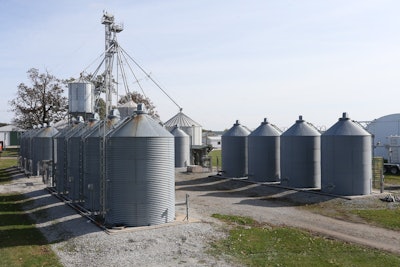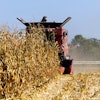
If your grain facility staff or local fire department has gone through a training on how to rescue a person involved in a grain entrapment incident, the odds are pretty good that Bill Field, professor of agricultural and biological engineering at Purdue University, was somehow involved.
Field and his team have done such trainings for about 15,000 rural fire departments in 12 states, he told attendees at PEAK in Minneapolis, Minnesota, on April 10.
And while these trainings can be useful should an entrapment incident occur, Field said they don’t occur as often as people typically think they do. In recent years, there has been an average of about 34.2 entrapment cases annually. And sadly, for the majority of these cases, the victims in these accidents will not get a chance to be rescued by people who have received the trainings.
“Sixty percent of the victims are dead when the fire engine arrives,” Field said. “Training firefighters how to recover bodies from grain bins doesn’t do much to solve the problem.”
Emphasis has been on rescue
Grain entrapment situations are tragic, particularly when the outcome is one or more fatalities. And when they happen, people pay attention.
“When you do a scrape of the media, almost every grain bin entrapment gets attention from the media, and then I get calls immediately, wanting us to do a grain rescue training,” said Field.
Also, when attention of these incidents occurs, people will also want to obtain apparatus such as grain rescue tubes, developed at a Purdue lab with which Field is affiliated.
But the trainings and the devices only do so much good since, as Field said, many victims have died before responders can get to the scene.
A change in thinking
With the efforts so far doing only a limited amount of good, Field said it is time to change the focus.
“If you look at the data over time, we see very little change in the average incidence per year. We have spent literally millions of dollars training firefighters how to rescue people in grain bins, and it has had almost zero impact, and yet we’re still doing it,” said Field.
Instead, Field suggests, the industry should be looking at why these incidents are happening, and how they can be prevented.
When Field looked at 50 of the most recent entrapment cases, nearly all of them involved “out-of-condition grain.”
And when such grain is discovered, farmers or workers will try to remove it or break it up. And in doing so, a person could get caught in with the flow of grain, or materials can fall off the walls of the bin and cause entrapment.
Field said more lessons need to be shared regarding how to prevent grain from getting in poor condition. People should know that care needs to be taken to make sure the tops of bins are securely in place so extra moisture, debris carried in by the wind, or activity from birds doesn’t leave grain impure. He also suggested the use of aeration systems and monitoring systems to prevent grain from getting in poor condition.
“I’m trying to get people to think about that, because we’re going to have a much bigger impact on reducing the number of incidents by maintaining high-quality grain, because it doesn’t take much neglect to end up with a crusted pile of garbage up on top of your bin,” Field said. “Our long-range strategy should focus on prevention, not response.”


















![Logan And Jerry Fitch[1]](https://img.feedandgrain.com/files/base/wattglobalmedia/all/image/2023/05/Logan_and_Jerry_Fitch_1_.6470faf6bcc37.png?auto=format%2Ccompress&fit=crop&h=112&q=70&w=112)
